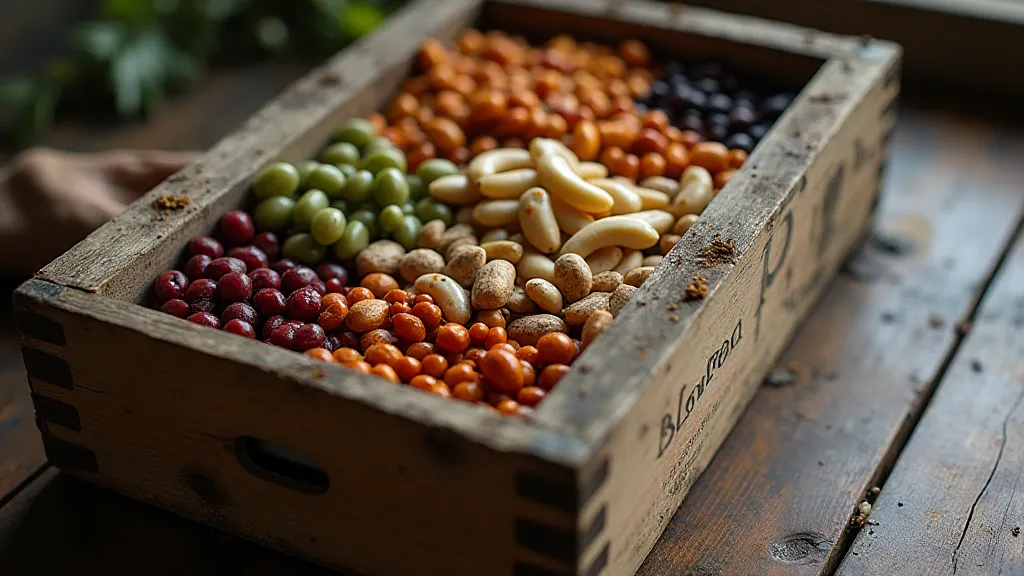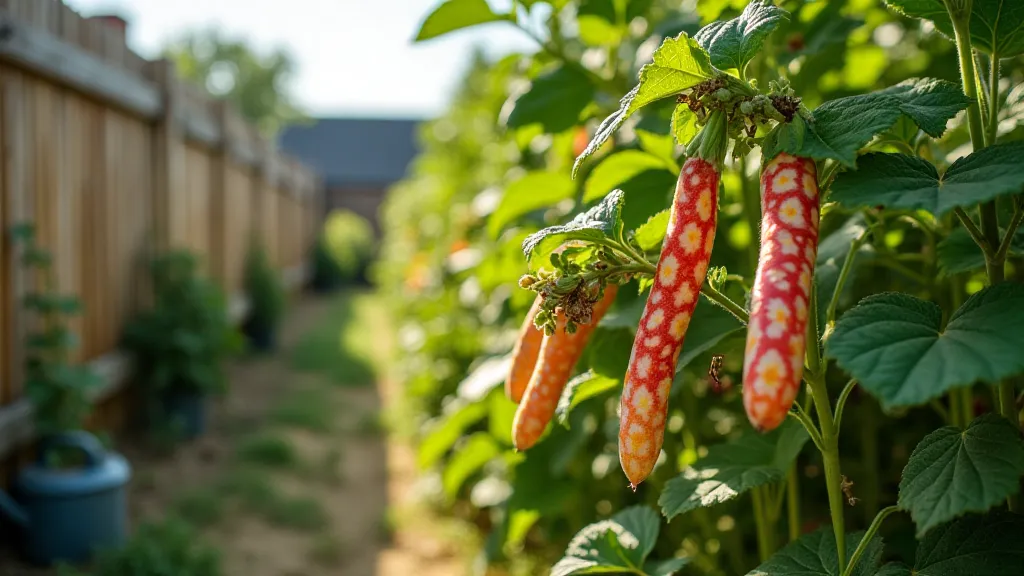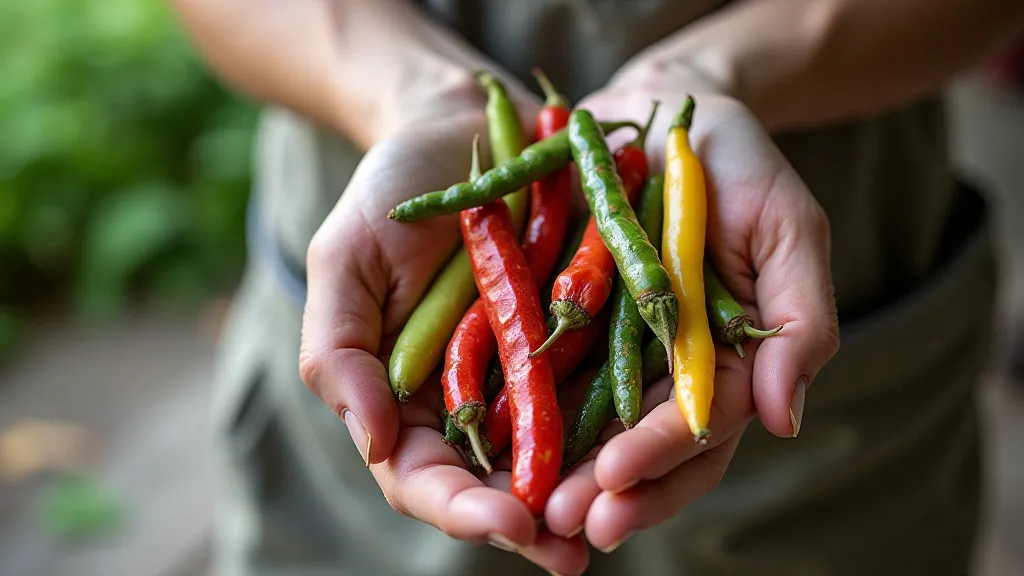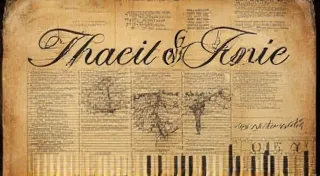Bean Whispers: Decoding Ancient Agricultural Lore
There’s a particular scent that lingers in old sheds, a mingling of dust, wood polish, and the ghost of something once vibrant. It’s the same scent, I suspect, that clings to heirloom seeds, passed down through generations. My grandfather, a man of few words but boundless patience, had a small patch of beans he tended each year – Kentucky Wonder, Romano Taranto, Jacob’s Cattle. He’s gone now, but those beans, those simple, unassuming plants, remain a tangible link to him, to his quiet dedication, and to a lineage of agricultural wisdom stretching back centuries. It’s a lineage often forgotten in our rush for convenience and uniformity, but one that speaks volumes when we take the time to listen – to the “bean whispers,” as I’d call them.
Heirloom beans aren’t just beans. They’s stories. They're living threads connecting us to our ancestors, to the cultures that nurtured them, and to a time when food wasn’t just sustenance, but a profound expression of identity and tradition. Unlike modern hybrid varieties bred for maximum yield or disease resistance, heirloom beans have been passed down through families, preserved through careful saving of seeds, representing generations of adaptation and selection by farmers, not corporations.

A Taste of History: Beans in Ancient Cultures
The history of beans is intertwined with the very fabric of human civilization. Archaeological evidence suggests that beans, originating in the Americas, were cultivated as early as 8,000 years ago. They formed the cornerstone of diets across the continents, deeply embedded in both practical necessity and ritual significance. The Maya, for instance, revered black beans as sacred, offering them in ceremonies and believing they held protective powers. In Andean cultures, various bean types were integral to religious festivals and symbolized fertility and abundance. Imagine the intricate knowledge passed down – the subtle nuances of soil preference, the understanding of the microclimates best suited to each variety, the ability to predict harvest based on the phases of the moon.
Think about the resilience these beans represent. They’re not fragile laboratory creations; they’re survivors. They’ve weathered droughts, pests, and changing climates, adapted to diverse environments through the tireless efforts of farmers who understood that a single variety rarely thrived everywhere. This deep connection between humans and the land, this intimate understanding of the natural world, is something we’ve largely lost in our modern, industrialized food system.
The Art of Preservation: Seeds as Stories
Saving seeds isn’t just about collecting beans; it's about safeguarding a legacy. My grandmother, a formidable woman with hands roughened by decades of gardening, taught me the basics. “Let the strongest plants produce the seeds,” she’d say, “and keep them safe.” The process itself is a small act of rebellion against the homogenization of our food supply. It’s a commitment to preserving biodiversity, to honoring the traditions of our ancestors, and to ensuring that future generations have access to the same incredible varieties we enjoy today.
Consider the craft involved. The careful selection of parent plants, the meticulous drying and storage of seeds – it’s an act of respect, a recognition that these tiny seeds hold within them the potential to sustain life and connect us to our past. It's similar, I think, to the reverence an antique accordion repairman feels for his instrument. He isn't just fixing bellows or replacing keys; he's preserving a piece of musical history, a vessel of joy and connection.
Growing Your Own: A Gentle Introduction to Heirloom Bean Cultivation
Getting started with heirloom bean growing isn’t difficult, but it does require a little patience and attention to detail. Like antique accordions, they thrive with gentle care and a willingness to learn their individual quirks. Most heirloom beans are annuals, meaning they complete their life cycle in a single growing season. They prefer full sun (at least 6 hours of direct sunlight per day) and well-drained soil. While specific requirements vary depending on the variety, a general approach works well:
- Soil Preparation: Amend your soil with compost or well-rotted manure to improve drainage and fertility.
- Sowing Seeds: Sow seeds directly into the garden after the last frost. Plant them about 1 inch deep and 2-3 inches apart.
- Watering: Keep the soil consistently moist, especially during germination.
- Support: Many heirloom bean varieties, particularly pole beans, require support to climb. Use trellises, stakes, or teepees to keep the plants upright.
- Harvesting: Harvest beans when they are young and tender. Allow some plants to mature fully to collect seeds for the following year.

A Palette of Possibilities: Exploring Heirloom Bean Varieties
The world of heirloom beans is a tapestry of color, shape, and flavor. From the iconic Kentucky Wonder to the striking Jacob's Cattle, each variety has its own unique story to tell. Romano Taranto beans, with their flattened shape and creamy texture, are perfect for Italian dishes. Cranberry beans, known for their rich, earthy flavor, are a staple in Appalachian cuisine. Black Turtle beans, with their deep, almost mystical color, are a common ingredient in Southwestern cooking.
The joy isn't solely in the eating, but also in the growing. Each variety presents a new challenge and a new opportunity to connect with the land and with the traditions of those who came before us. Like learning to play a vintage accordion, the initial learning curve might seem daunting, but the rewards – the connection to something larger than oneself, the satisfaction of mastering a skill, the joy of creating something beautiful and meaningful – are immeasurable.
The aroma of drying bean pods, the vibrant colors of the ripening plants, the anticipation of the harvest – these are the simple pleasures that reconnect us to our roots and remind us that food is so much more than just fuel. It's a story, a tradition, a legacy. And with each bean we plant, we become a part of that story.
Listen closely. You can almost hear the whispers of the ancestors, carried on the wind, carried in the soil, carried in the seeds.






